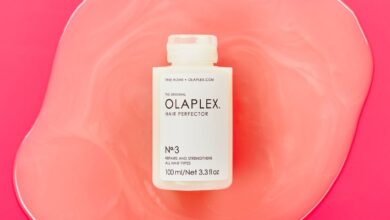
In this article, you will learn everything you need to know about your hair’s porosity and how to care for it. Understanding the porosity of your hair is crucial for maintaining its health and achieving your desired look. Whether you have high, low, or medium porosity hair, we’ve got you covered with easy steps to determine your hair’s porosity level and tailored care routines to keep your locks looking their best. Say goodbye to frizz and dullness, and say hello to shiny, luscious hair that’s as healthy as can be. Let’s get started on this journey to understanding and caring for your hair’s porosity!
What is Hair Porosity?
Definition of Hair Porosity
Hair porosity refers to the hair’s ability to absorb and retain moisture. It is determined by the condition of the hair’s cuticles, which are the outermost protective layer of each strand. The cuticles can be either tightly packed (low porosity), lifted and slightly open (normal porosity), or consistently raised and open (high porosity). Understanding your hair’s porosity level is crucial in maintaining its health and ensuring that it receives the appropriate care.
Factors Affecting Hair Porosity
Several factors can affect hair porosity. Some of the main factors include genetics, environmental damage, heat styling, chemical treatments, and hair care routines. Understanding these factors can help you determine and adjust your hair care routine to cater to your specific porosity level.
Determining Your Hair Porosity
Water Test
The water test is a simple and effective method to determine your hair porosity. Start by taking a strand of clean, dry hair and placing it in a glass of water. After a few minutes, observe the hair’s behavior. If the strand floats on the surface, it indicates low porosity. If it sinks to the bottom, it indicates high porosity. If it remains in the middle, it indicates normal porosity.
Slip and Slide Test
The slip and slide test involves running a finger up and down a single strand of hair. If your fingers smoothly glide along the strand without much friction, it suggests low porosity. If you feel some resistance or bumps, it suggests normal porosity. If your fingers easily slide along the strand with no resistance, it suggests high porosity.
Float Test
Similar to the water test, the float test requires placing a few strands of clean, dry hair in a bowl of water. If the strands float immediately, it suggests low porosity. If they sink slowly, it indicates normal porosity. If they sink quickly, it suggests high porosity.
Product Absorption Test
The product absorption test involves applying a small amount of water or a leave-in conditioner to a strand of hair. If the product sits on the surface without penetrating the hair, it suggests low porosity. If the product is absorbed quickly, it suggests high porosity. If there is moderate absorption, it suggests normal porosity.
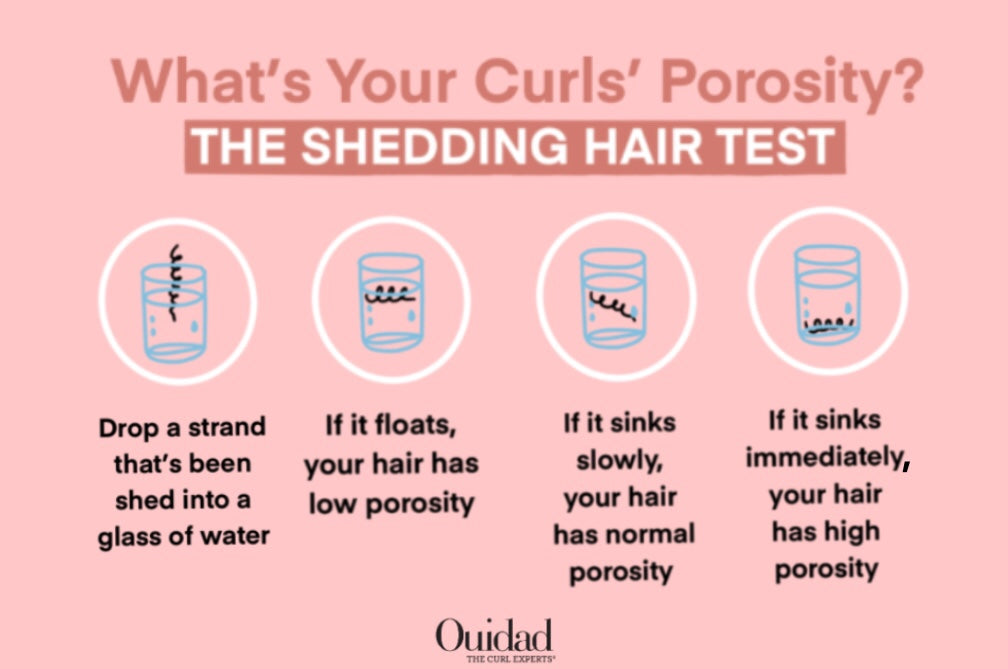
Understanding Low Porosity Hair
Characteristics of Low Porosity Hair
Low porosity hair has tightly packed cuticles that resist moisture absorption. It often appears shiny, feels smooth to the touch, and takes longer to dry than other porosity types. However, it can also be prone to product buildup and can become weighed down easily.
Tips for Caring for Low Porosity Hair
Caring for low porosity hair involves using lightweight and water-based products that can easily penetrate the cuticles. It is advisable to avoid heavy oils and butters, as they can contribute to product buildup. Deep conditioning with heat can help open up the cuticles for better moisture absorption. Additionally, using clarifying shampoos occasionally can help remove any buildup and keep the hair healthy.
Dealing with High Porosity Hair
Characteristics of High Porosity Hair
High porosity hair has inconsistent or lifted cuticles, leading to excessive moisture absorption and quick moisture loss. It often appears frizzy, dry, and lacks shine. Hair with high porosity may also be more prone to damage from heat styling and chemical treatments.
Tips for Caring for High Porosity Hair
Caring for high porosity hair involves sealing the cuticles and preventing moisture loss. It is recommended to use heavier products such as oils and creams to help retain moisture. Deep conditioning treatments and protein treatments can also help strengthen and repair the hair. Additionally, minimizing heat styling and protecting the hair from environmental damage can prevent further damage.
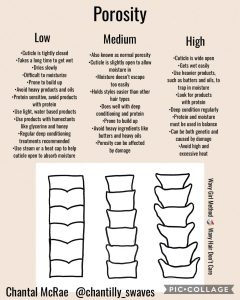
Finding the Balance: Normal Porosity Hair
Characteristics of Normal Porosity Hair
Normal porosity hair has slightly raised cuticles that allow for proper moisture absorption and retention. It is often described as the ideal porosity type as it tends to be healthier, easier to manage, and less prone to damage. Normal porosity hair has a good balance between moisture retention and absorption.
Tips for Caring for Normal Porosity Hair
Caring for normal porosity hair involves maintaining its health and balance. It is important to continue practicing proper hair care routines such as regular deep conditioning and avoiding excessive heat styling. Using a balanced combination of lightweight and moisturizing products can help keep the hair well-nourished and hydrated.
Choosing the Right Hair Products
Best Products for Low Porosity Hair
When selecting products for low porosity hair, it is essential to choose lightweight, water-based formulas. Look for products that have humectants like glycerin and aloe vera, as they can draw moisture into the hair. Avoid heavy oils and silicones that can weigh down the hair.
Best Products for High Porosity Hair
For high porosity hair, opt for heavier, oil-based products that can help seal in moisture and prevent further moisture loss. Look for products that contain ingredients like shea butter, coconut oil, and argan oil. Avoid products that contain sulfates and alcohols, as they can further dry out the hair.
Best Products for Normal Porosity Hair
Normal porosity hair can benefit from a variety of hair products. It is important to focus on maintaining a balance between lightweight and moisturizing products. Look for products that provide hydration and nourishment without weighing down the hair. Natural ingredients like jojoba oil, avocado oil, and aloe vera can be beneficial for normal porosity hair.
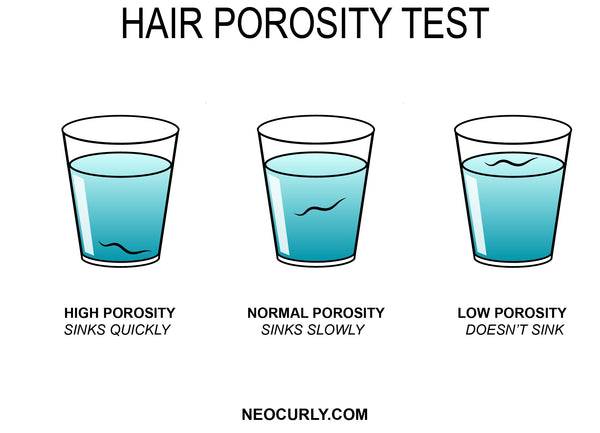
Hair Porosity and Hydration
Importance of Hydrating Based on Porosity
Understanding your hair’s porosity level is crucial in determining the best approach to hydration. Low porosity hair requires lightweight products and techniques that allow moisture to penetrate the cuticles. High porosity hair, on the other hand, requires methods that focus on sealing in moisture to prevent further moisture loss. Normal porosity hair requires a balanced approach that maintains its natural moisture levels.
Tips for Optimal Hair Hydration
Regardless of porosity level, hydrating the hair properly is essential for its health and appearance. Some tips for optimal hair hydration include deep conditioning regularly, using moisturizing leave-in conditioners, applying products to damp hair, avoiding excessive heat styling, and protecting the hair from environmental damage.
Daily Hair Care Routine Based on Porosity
Low Porosity Hair Routine
For low porosity hair, it is important to focus on using lightweight products and techniques that promote moisture absorption. Start by shampooing with a clarifying shampoo to remove any buildup. Follow with a lightweight conditioner or a deep conditioning treatment with heat. Apply a leave-in conditioner or a lightweight moisturizer to damp hair and seal it in with a light oil or serum. Style as desired and avoid excessive manipulation.
High Porosity Hair Routine
High porosity hair requires a routine that focuses on sealing in moisture and minimizing further damage. Begin by shampooing with a moisturizing shampoo. Follow with a deep conditioning treatment and use heat to open up the cuticles for better product absorption. Apply a moisture-sealing leave-in conditioner or cream, followed by a heavy oil or butter to help seal the cuticles. Style the hair while being gentle to avoid breakage.
Normal Porosity Hair Routine
For normal porosity hair, a balanced routine is key. Start with a moisturizing shampoo and follow with a deep conditioning treatment. Apply a leave-in conditioner or a lightweight moisturizer to damp hair and seal it in with a light oil or serum. Style as desired and focus on maintaining the hair’s health and balance.
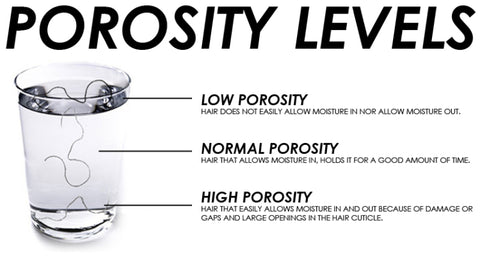
Protective Styling for Different Porosity Levels
Protective Styling for Low Porosity Hair
Protective styles for low porosity hair should focus on minimizing manipulation and providing moisture. Examples of protective styles include braids, twists, buns, and updos. Before styling, make sure to thoroughly moisturize the hair and apply a lightweight oil or cream to seal in the moisture. Avoid tight styles that can cause unnecessary tension on the hair.
Protective Styling for High Porosity Hair
For high porosity hair, protective styles should aim to prevent further moisture loss and protect the hair from damage. Styles such as bantu knots, flat twists, and finger coils can help keep the hair moisturized and minimize frizz. Before styling, apply a leave-in conditioner and a moisturizing cream to hydrate the hair. Use oils or butters to seal in the moisture and protect the ends.
Protective Styling for Normal Porosity Hair
Protective styling for normal porosity hair can be versatile, as the hair is naturally balanced in terms of moisture retention and absorption. Styles like braids, buns, ponytails, and twist outs can be suitable options. Prioritize moisturizing the hair before styling and use lightweight products to avoid weigh down.
Porosity Changes over Time and with Damage
Effects of Styling and Heat Damage on Porosity
Over time and with excessive styling and heat damage, the hair’s porosity can change. Excessive heat styling, chemical treatments, and harsh styling practices can cause the cuticles to become more lifted, leading to increased porosity. It is important to use heat protectants, minimize heat styling, and opt for gentle styling techniques to prevent damage.
Reversing Porosity Damage
While it may not be possible to completely reverse porosity damage, there are steps you can take to improve the condition of your hair. Focus on repairing and strengthening treatments such as protein treatments and deep conditioning. Trim regularly to remove damaged ends and promote healthy hair growth. Adopt a healthy hair care routine that includes gentle styling, minimal heat styling, and proper hydration.
By understanding your hair’s porosity and implementing appropriate care practices, you can maintain its health, manageability, and overall appearance. Take the time to assess your hair’s porosity level and modify your hair care routine accordingly. Remember, everyone’s hair is unique, and what works for others may not work for you. Experiment, listen to your hair, and embrace the journey towards healthy, hydrated hair.
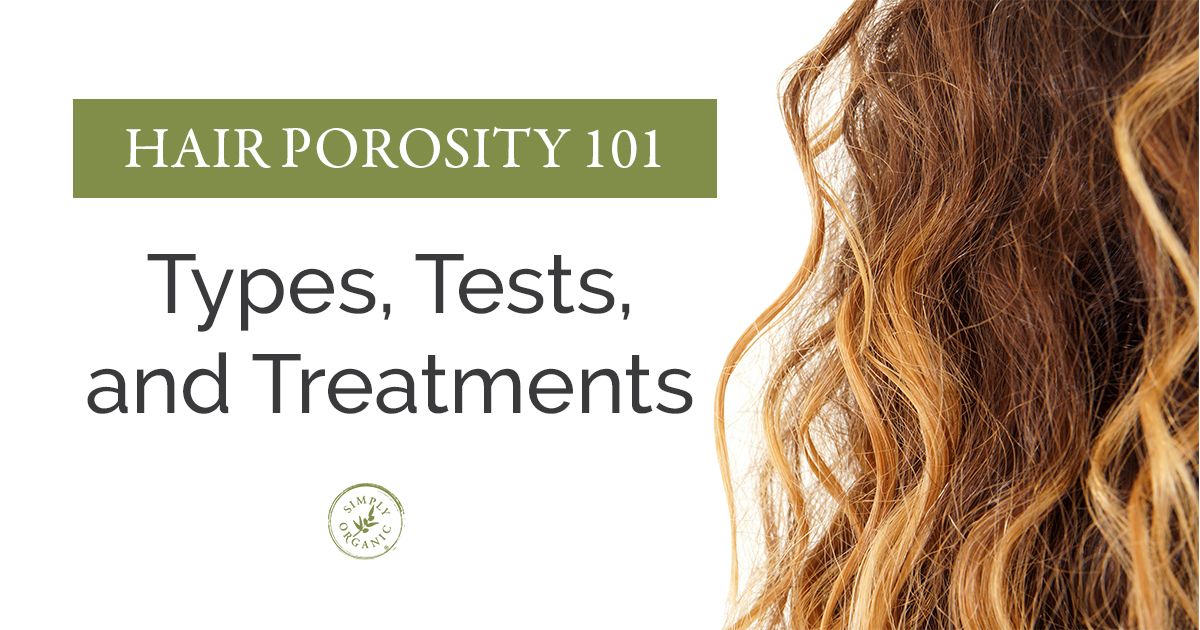
Unlocking The Secrets Of Your Hair Type: A Comprehensive Guide(Opens in a new browser tab)
Mielle Organics Rosemary Mint Shampoo Review(Opens in a new browser tab)



